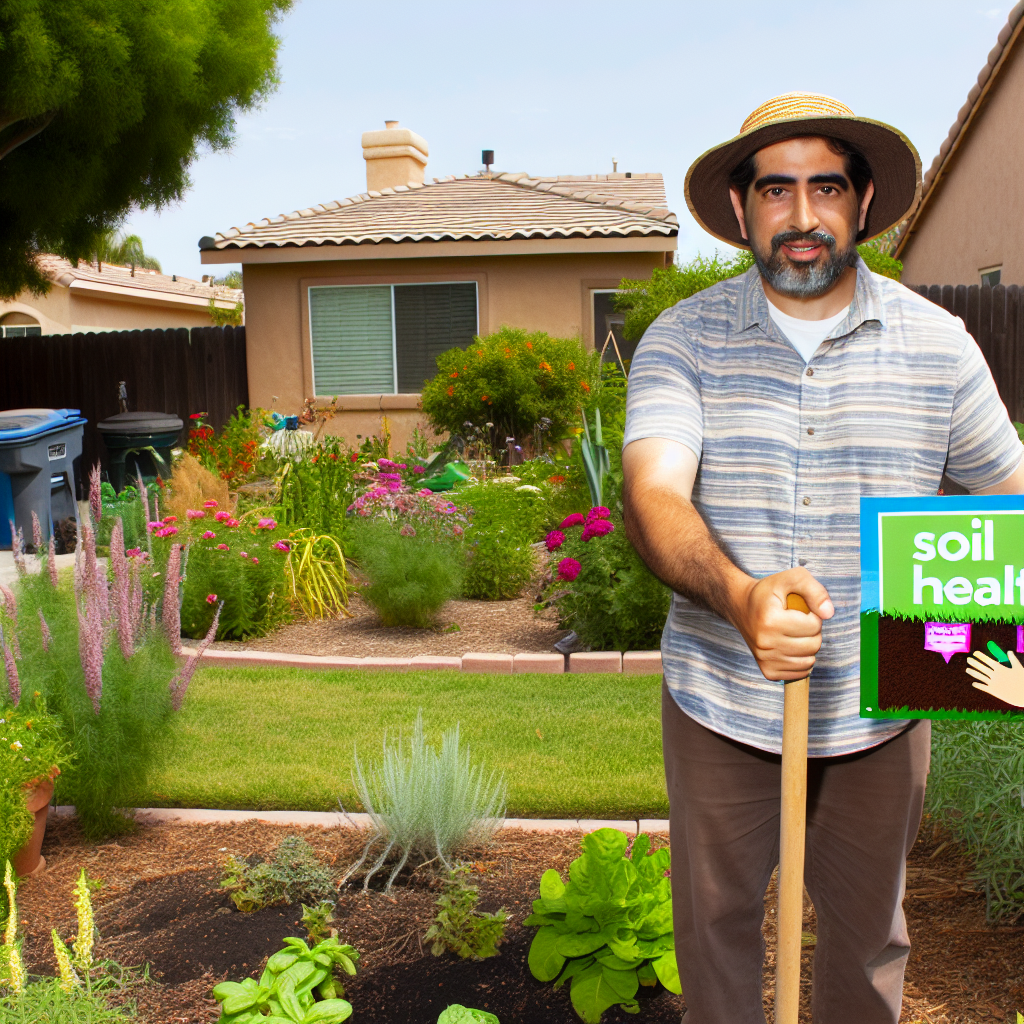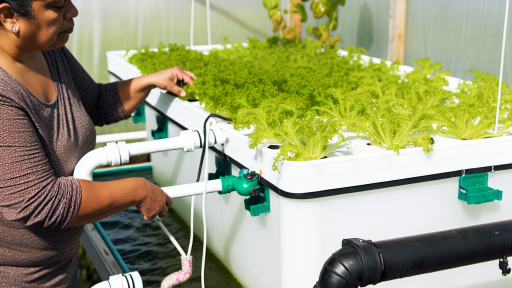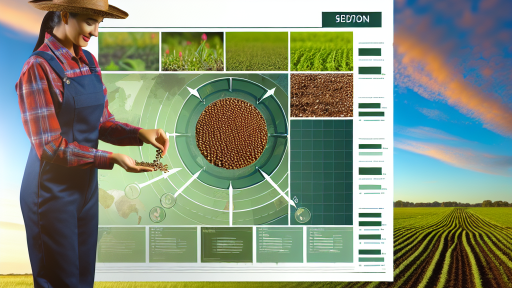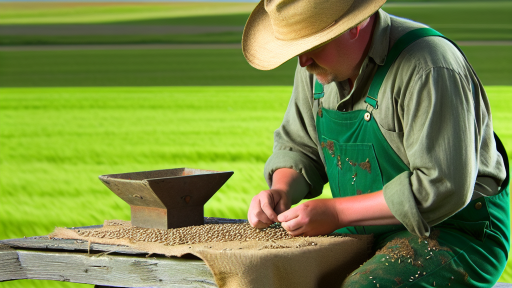Introduction to Edible Landscaping and Its Importance for Soil Health
Edible landscaping combines aesthetics with food production.
It transforms gardens into productive spaces that nourish both people and the environment.
This practice emphasizes the importance of soil health as a foundation for growth.
Soil health is crucial for sustainable gardening and agricultural practices.
Understanding Soil Health
Healthy soil supports diverse biological communities.
It retains water and nutrients, benefiting plants significantly.
Moreover, it prevents erosion and promotes robust plant growth.
The Role of Edible Plants
Edible plants contribute to soil enrichment directly.
They offer organic matter through leaves and roots.
This process enhances nutrient content and improves soil structure.
Furthermore, deep-rooted plants aerate the soil effectively.
Building Biodiversity with Edible Landscaping
Diverse plant species enhance ecological stability.
They attract beneficial insects and encourage pollination.
This diversity also mitigates pest issues naturally.
Practical Tips for Edible Landscaping
- Start with native edible plants suited for your region.
- Incorporate companion planting to enhance growth.
- Use organic mulches to retain moisture and suppress weeds.
These practices create a healthy environment conducive to growth.
Transform Your Agribusiness
Unlock your farm's potential with expert advice tailored to your needs. Get actionable steps that drive real results.
Get StartedLong-term Benefits of Edible Landscaping
Over time, edible landscaping fosters an interconnected ecosystem.
This approach reduces the need for synthetic fertilizers.
Ultimately, it promotes a more sustainable food system.
Additionally, it enhances local food security.
Key Principles of Edible Landscaping
Edible landscaping blends aesthetics with functionality.
This practice enhances the visual appeal of outdoor spaces.
Simultaneously, it provides abundant food sources.
Designing landscapes with edible plants fosters biodiversity.
Moreover, it attracts beneficial wildlife into gardens.
Choosing the Right Plants
Selecting suitable plants is essential for success.
Consider the local climate and soil conditions.
Native plants tend to thrive better in your area.
Mixing ornamental and edible varieties enhances beauty.
For instance, kale, mint, and flowering herbs provide color.
Soil Health and Enrichment
Healthy soil promotes robust plant growth.
Add organic matter to improve soil structure.
Composting is a great way to enrich the soil.
Additionally, cover crops can enhance nutrient levels.
Using mulches retains moisture and suppresses weeds.
Implementing Companion Planting
Companion planting maximizes space utilization.
This method promotes mutual benefits between plants.
For example, planting tomatoes with basil improves flavor.
Furthermore, some plants repel harmful pests naturally.
Water Management Strategies
Efficient water management is crucial for plant health.
Showcase Your Farming Business
Publish your professional farming services profile on our blog for a one-time fee of $200 and reach a dedicated audience of farmers and agribusiness owners.
Publish Your ProfileDrip irrigation systems save water and reduce disease.
Rainwater harvesting also supports sustainable landscaping.
Consider planting drought-resistant species to conserve moisture.
Maintaining a Diverse Ecosystem
Diversity in your garden ensures resilience against pests.
Encouraging a variety of plant types attracts pollinators.
Creating a habitat for beneficial insects enhances productivity.
Furthermore, rotating crops maintains soil fertility.
Community Engagement and Education
Sharing knowledge within your community fosters collaboration.
Host workshops to teach others about edible landscaping.
Involve local schools in gardening projects for education.
Community gardens can strengthen local relationships.
Selecting the Right Plants: Edible Varieties that Improve Soil Quality
Introduction to Edible Landscaping
Edible landscaping combines beauty with functionality.
This approach enhances both aesthetics and soil health.
Choosing the right plants is crucial for success.
Benefits of Edible Plants for Soil Health
Edible plants contribute positively to soil quality.
They often have deep roots that break up compacted soil.
Furthermore, they can add nutrients back into the earth.
In addition, certain varieties help suppress weeds naturally.
Key Edible Plants to Consider
- Legumes improve nitrogen levels in the soil.
- Herbs such as mint and basil can attract beneficial insects.
- Root vegetables like carrots and beets aerate the soil.
- Perennials like asparagus can provide long-term benefits.
Choosing the Right Location
Consider sun exposure when selecting plant locations.
Ensure plants have adequate space for growth.
Also, think about water drainage to prevent root rot.
Observe existing soil conditions before planting.
Implementing Companion Planting Techniques
Companion planting enhances plant growth and soil health.
Some plants support each other by repelling pests.
Others may share nutrients optimally in the soil.
For example, planting tomatoes with basil can boost growth.
Maintaining Soil Quality Over Time
Regularly test your soil to track its health.
Amend soil as necessary with organic matter.
Maintain mulch layers to enhance moisture retention.
Rotate crops annually to prevent nutrient depletion.
You Might Also Like: Pest Control Strategies For Urban Gardens
The Role of Companion Planting in Enhancing Soil Health
Understanding Companion Planting
Companion planting involves growing different plants together for mutual benefit.
This technique improves soil health and boosts plant growth.
Furthermore, it reduces pests and diseases in the garden.
Types of Companion Plants
Certain plants benefit more from each other when grown together.
For instance, planting marigolds near vegetables attracts beneficial insects.
Additionally, legumes like beans add nitrogen back into the soil.
Benefits of Companion Planting
Companion planting enhances soil fertility.
It promotes biodiversity in your garden ecosystem.
Moreover, this practice can lead to improved pest control.
Showcase Your Farming Business
Publish your professional farming services profile on our blog for a one-time fee of $200 and reach a dedicated audience of farmers and agribusiness owners.
Publish Your ProfileBy diversifying crops, you create a healthier environment for plant growth.
Examples of Effective Companion Planting
- Tomatoes grow well with basil, enhancing flavor and reducing pests.
- Cucumbers benefit from being planted with corn and radishes.
- Carrots and onions can coexist to deter pests effectively.
Implementing Companion Planting
Start by researching which plants complement each other.
Plan your garden layout based on their compatibility.
Regularly monitor plant health to adapt your strategy as needed.
See Related Content: Marketing Heirloom Produce: Tips for Farmers
Soil Building Techniques
Using Organic Matter
Incorporating organic matter enhances soil structure and fertility.
This process increases microbial activity, which is essential for nutrient cycling.
Regularly adding compost enriches the soil with vital nutrients.
Compost retains moisture, benefiting plant growth during dry spells.
Moreover, it improves aeration and drainage in heavy soils.
Applying well-rotted manure can also boost soil health effectively.
Always ensure manure is properly aged to prevent burning plants.
Incorporating cover crops serves as another excellent method.
Cover crops suppress weeds while adding organic matter when tilled under.
They can also fix nitrogen in the soil, enriching its nutrient profile.
Mulching for Soil Health
Mulching protects the soil from erosion and temperature fluctuations.
It conserves moisture, thereby reducing the need for frequent watering.
Organic mulches, such as straw or wood chips, decompose over time.
This decomposition adds organic matter back into the soil.
Apply a layer of mulch around plants to minimize weed growth.
In addition, mulch provides habitats for beneficial insects.
This practice promotes a healthier ecosystem in your garden.
Using biodegradable mulches also supports sustainable gardening.
As they break down, they enrich the soil naturally.
Regularly replenishing mulch ensures continuous benefits for your plants.
Learn More: Troubleshooting Common Hydroponic Issues

Water Management Strategies for Healthy Edible Landscapes
Understanding Water Needs
Every plant species has unique water requirements.
Understanding these needs is crucial for successful edible landscaping.
Additionally, plants in different growth stages require varying amounts of water.
Implementing Efficient Irrigation Systems
Choose appropriate irrigation systems to conserve water.
Drip irrigation minimizes water waste through targeted delivery.
Sprinkler systems offer coverage for larger areas.
Consider automated systems to optimize watering schedules.
Utilizing Rainwater Harvesting
Collecting rainwater benefits both plants and the environment.
Install rain barrels to gather water from rooftops.
This method reduces reliance on municipal sources.
Moreover, harvested rainwater is often better for plants.
Soil Moisture Management
Healthy soil retains moisture effectively.
Incorporate organic matter to enhance soil structure.
Mulching helps to reduce evaporation from the soil surface.
Showcase Your Farming Business
Publish your professional farming services profile on our blog for a one-time fee of $200 and reach a dedicated audience of farmers and agribusiness owners.
Publish Your ProfileRegularly check soil moisture levels to avoid over-watering.
Planting Strategies for Water Conservation
Select drought-resistant plants for sustainable landscaping.
Group plants with similar water needs together.
This approach facilitates efficient watering practices.
Consider native plants, which often require less water.
Monitoring and Adjusting Practices
Regularly assess your watering strategies for effectiveness.
Track weather patterns to adjust irrigation schedules accordingly.
Evaluate plant health to make necessary changes to your routine.
This proactive approach enhances both plant vitality and soil health.
Find Out More: How To Save Seeds For Sustainable Farming
Pest Management in Edible Landscapes
Integrating Organic Approaches
Pest management in edible landscapes starts with organic methods.
These methods reduce chemical pesticide use effectively.
Implementing natural predators enhances pest control.
Ladybugs and lacewings are excellent allies in the garden.
Moreover, companion planting can deter unwanted pests.
For instance, marigolds repel nematodes and aphids.
Using barriers, such as row covers, also protects crops.
Lastly, regular monitoring helps identify pest issues early.
Encouraging Biodiversity
Biodiversity is a cornerstone of healthy ecosystems.
It supports soil health and pest management.
Planting a variety of species can attract beneficial insects.
For example, diverse flowering herbs attract pollinators and predators.
Additionally, polyculture systems can enhance resilience against pests.
Rotating crops prevents pest populations from building up.
Thus, farmers should rotate their crops each season.
Soil Management Practices
Healthy soil fosters a robust pest management system.
Incorporating organic matter improves soil structure.
Compost not only adds nutrients but also encourages microbial activity.
Furthermore, cover crops protect soil from erosion.
They also suppress weeds, limiting pest habitats.
Regular soil testing can identify nutrient deficiencies.
Addressing these deficiencies supports plant health and vigor.
Using Technology in Pest Management
Modern technology enhances pest management strategies.
Farmers can now employ pest identification apps for efficiency.
These tools assist in monitoring pest populations accurately.
Additionally, drones can survey fields quickly.
They provide valuable data for targeted interventions.
Moreover, using integrated pest management (IPM) systems fosters sustainable practices.
These systems combine cultural, mechanical, and biological controls effectively.
Community Engagement and Education
Education plays a crucial role in pest management.
Showcase Your Farming Business
Publish your professional farming services profile on our blog for a one-time fee of $200 and reach a dedicated audience of farmers and agribusiness owners.
Publish Your ProfileWorkshops can empower local gardeners with knowledge.
Community gardens offer hands-on learning experiences.
Furthermore, connecting with local agricultural extensions provides resources.
These institutions can offer tailored advice for specific regions.
Ultimately, fostering a community approach enhances overall soil health.
Case Studies: Successful Edible Landscaping Projects Fostering Soil Health
Urban Edible Gardens Initiative
The Urban Edible Gardens Initiative transformed vacant lots into thriving gardens.
This project improved soil quality significantly within a year.
In addition, local volunteers actively participated in garden maintenance.
This engagement fostered community spirit and shared knowledge.
As a result, the gardens provided fresh produce to underserved neighborhoods.
The initiative demonstrated that collaboration enhances urban soil health.
Green Roofs for Healthy Cities
Green roofs have emerged as effective solutions for urban food production.
One prominent example is the Green Roof Project in downtown Chicago.
This project integrated thoughtful landscaping with edible plants.
Moreover, the design improved stormwater management and enhanced biodiversity.
It also illustrated how urban areas can contribute to local food systems.
Thus, green roofs represent innovative ways to promote soil health in cities.
Community-Based Agroforestry Programs
Agroforestry programs in rural areas create functional landscapes.
These programs integrate tree planting with vegetable cultivation.
For instance, a program in North Carolina improved nutrient cycling.
Participating farmers noted reduced soil erosion and increased biodiversity.
This approach maintained soil moisture and enhanced crop yields.
Community members gained practical skills in sustainable practices.
School Gardens Initiative
School gardens have gained popularity across various educational institutions.
One exemplary program is the School Gardens Project in Portland.
This initiative teaches students about food systems and ecology.
Students actively participate in planting and maintaining edible landscapes.
Consequently, this hands-on experience connects them to soil health principles.
Furthermore, the initiative promotes healthy eating habits among students.
Neighborhood Food Forests
Neighborhood food forests represent a sustainable approach to community gardening.
A notable example is the Phoenix Food Forest in Arizona.
This project emphasizes permaculture principles and biodiversity.
Residents could harvest fruits and nuts while improving local soil structure.
Such projects enhance community resilience and encourage environmental stewardship.
Food forests serve as educational sites for sustainable gardening practices.
Additional Resources
Maximizing Production in Small-Scale Flower Farming: Tips for …




